Aquarius Reef Base: An Actual Underwater Lab, and the Last of a Dying Breed
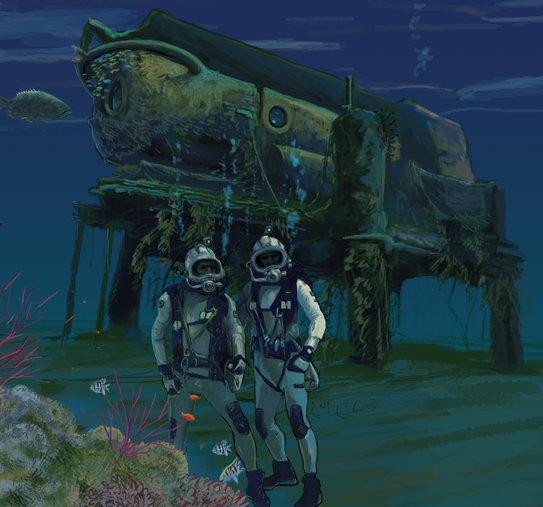
I've written before about human habitats in the ocean, and it's been my experience that while everybody and their uncle knows about the ISS, very few people are even aware that there exists an undersea equivalent. Aquarius Reef Base, the only open ocean, offshore, undersea laboratory still in operation today.
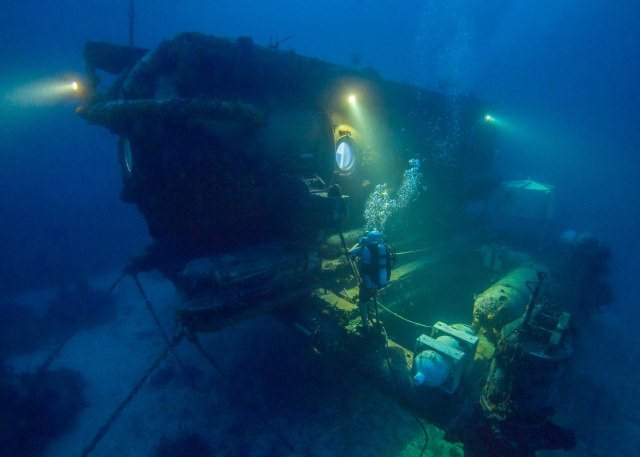
Underwater bases are the sort of thing that most would associate with science fiction. The ISS has been around so long it's sort of mundane, but underwater bases have a mysterious allure to them. The added fear of drowning, of gargantuan undiscovered sea creatures.
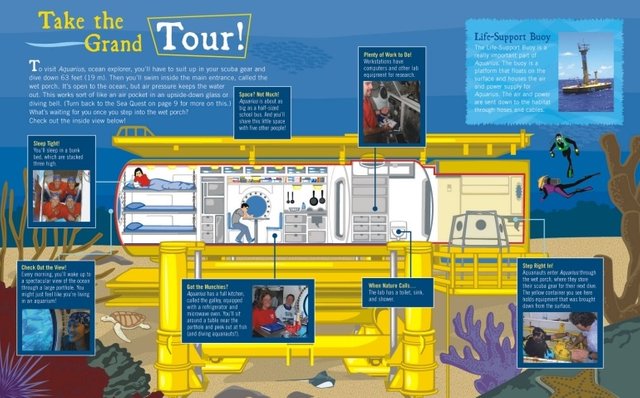
Aquarius Reef base sits 5.4 miles offshore of Key Largo, Florida. It's 63 feet deep, though the habitat sits up off the seafloor on weighted supports, so the actual living space is at a depth of 50 feet. This is so there's space underneath the habitat for aquanauts to enter and exit the structure through an open pool in the floor of a module called the "wet porch".
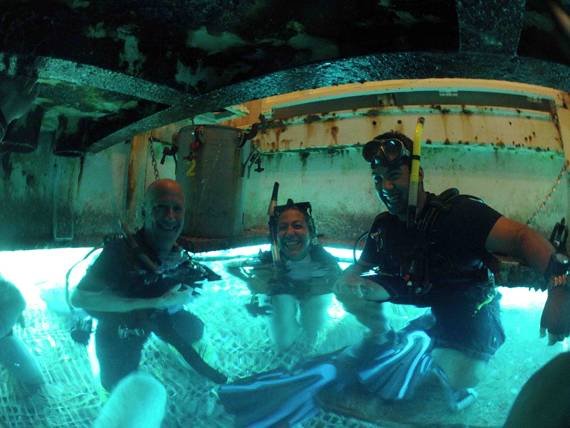
This is possible without water rushing inside for the same reason that you can turn a glass upside down and push it down into water without the water rising to fill the glass. The big bubble of trapped air in the glass has nowhere to go. It will shrink as you push the glass deeper, compressing the air inside.
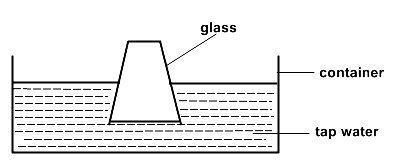
But if you were to continually pump fresh air down through a hose into the glass to replenish the air supply, you could keep the water level where you want it, and the air inside would stay breathable because the CO2 you exhale is continually vented out into the water as bubbles.
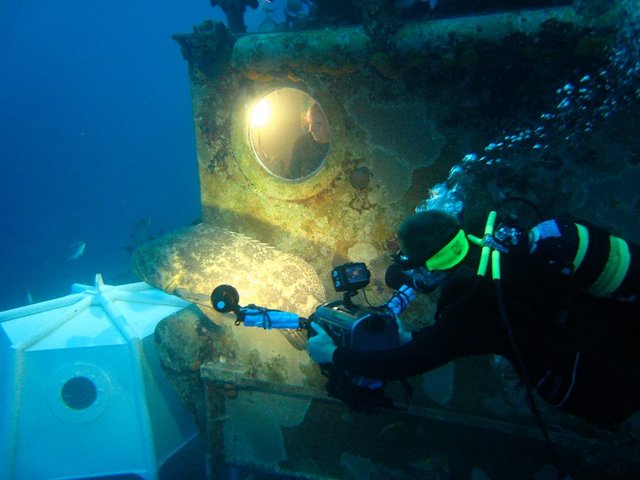
The wet porch can be a big flat sided metal box with no danger of implosion because there is no pressure difference between the inside air and the outside water. The only stress on it is the upward force of buoyancy, straining against the many tons of iron weights that hold Aquarius down.
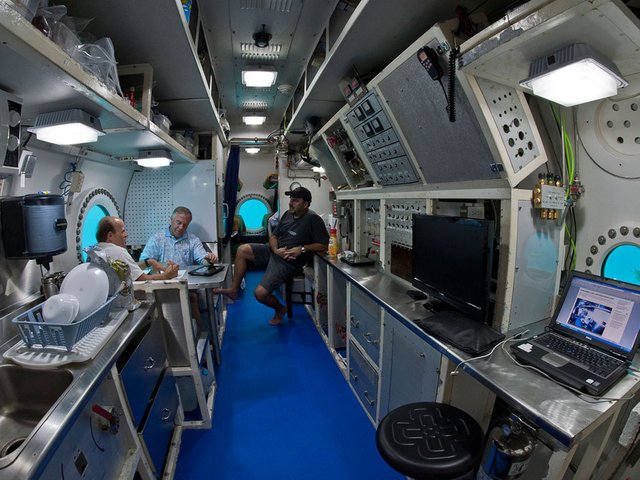
The rest of the habitat, however, is a cylinder. This is because besides being an underwater base, Aquarius (except for the wet porch) is also a decompression chamber. It used to be that crews of undersea bases had to be winched to the surface in a sealed diving bell, which was then mated to a decompression chamber on the deck of a ship.
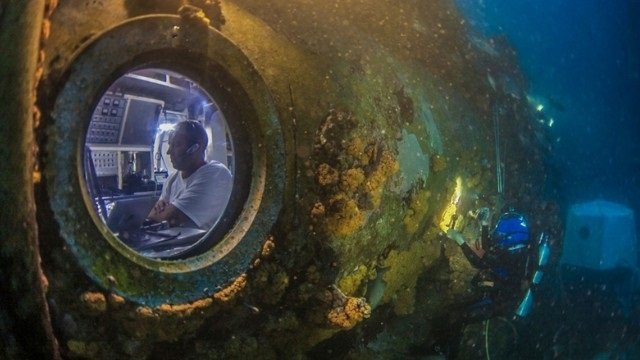
But with Aquarius that's no longer needed. When the mission ends, the crew decompresses right in the habitat before swimming up to the surface. This was a capability shared by Aquarius' much smaller predecessor, Hydrolab (see below). Although Hydrolab operated at sea level air pressure inside most of the time, limiting the time divers had out in the water.
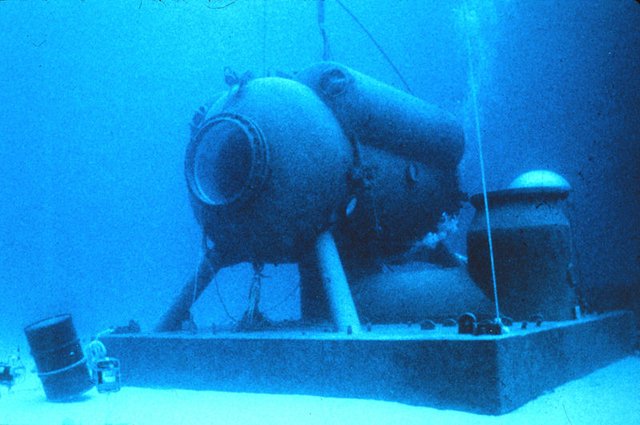
The advantage Aquarius has over Hydrolab by operating in ambient pressure mode (except when decompressing the crew) is that with the crew can allow themselves to fully saturate with nitrogen.
This is to say that instead of having to return to the surface before they take on a dangerous amount of nitrogen that would cause the bends, they instead can return to Aquarius between dives, which is at the pressure their bodies are adapted to.
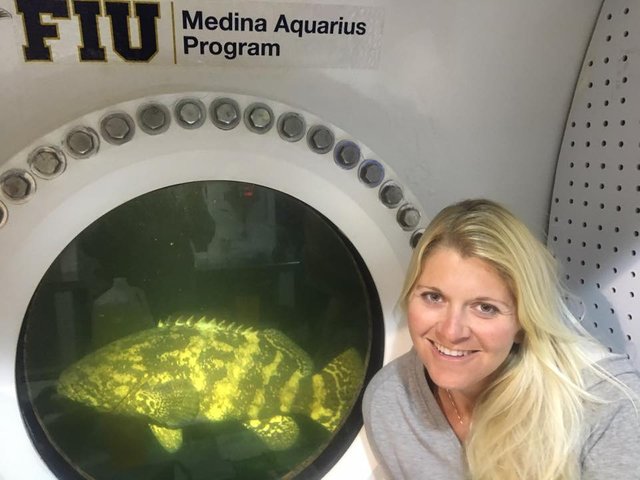
This means they can dive as much as they want, every day. There's no limits anymore, except to their physical endurance. This usually means 9 hours in the water a day, per diver, where it would be only 1 or 2 if they dove from the surface instead of a habitat. Think of how much more productivity for marine biologists becomes possible when they have a habitat like Aquarius to work from!
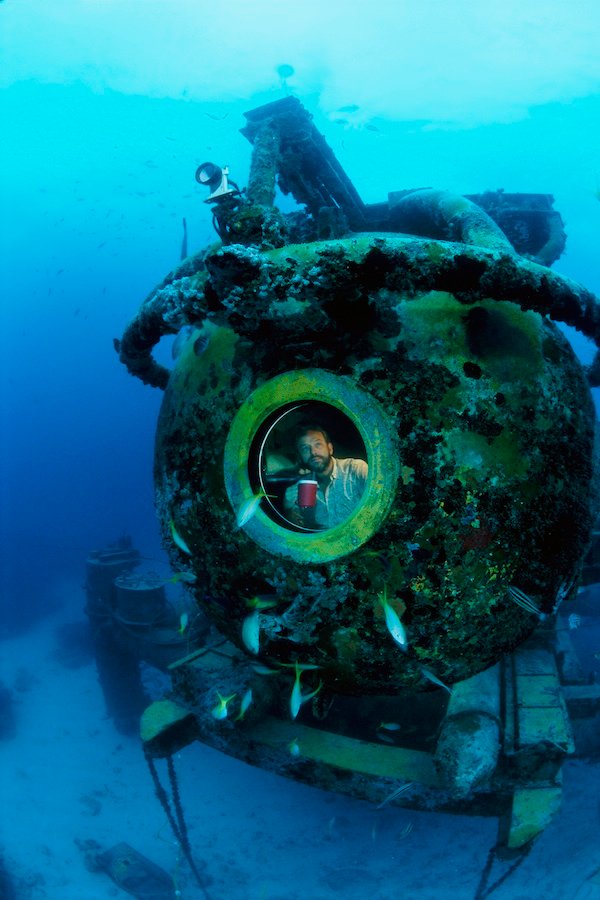
Aquarius was designed in 1986 by Perry Submarine Builders of Florida, and constructed by Victoria Machine Works in Victoria, Texas. Aquarius operated among the Virgin islands until a hurricane nearly destroyed it, whereupon it was hauled up from the seafloor and relocated to the Florida Keys in 1993. (See below, Aquarius being deployed from a ship)
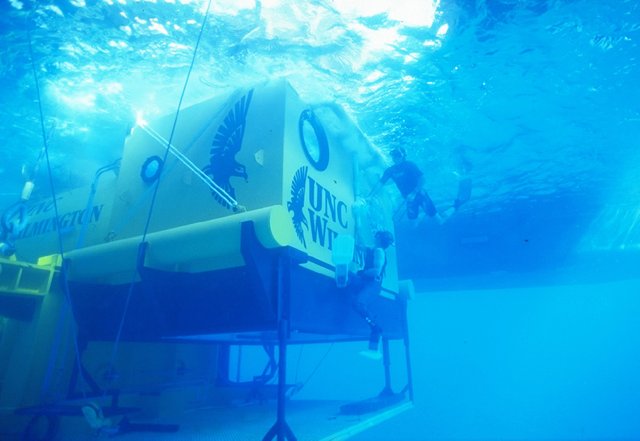
It's been there ever since, slowly accumulating a living skin of coral and other marine organisms which protects the hull from corrosion and self-heals when damaged. The habitat changed hands in 2013 when government funding for Aquarius was eliminated.
It nearly meant an end to the whole project until Florida International University stepped in, bought Aquarius and began operating it as an asset of their marine biology program.
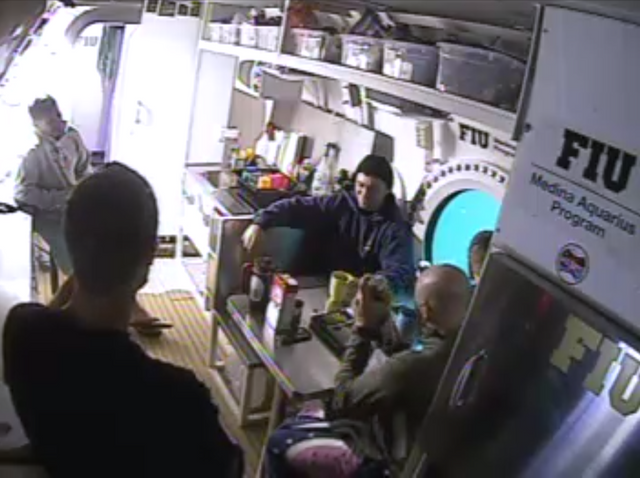
During missions, there are several live webcams you can use to spectate both the inside and immediate outside area of the habitat from this website. It's a bit voyeuristic, or like having an ant farm, or watching hamsters run through their tubes. Then there's the wow factor that never goes away when you remember you're watching real people, live, going about their daily work in an underwater base.
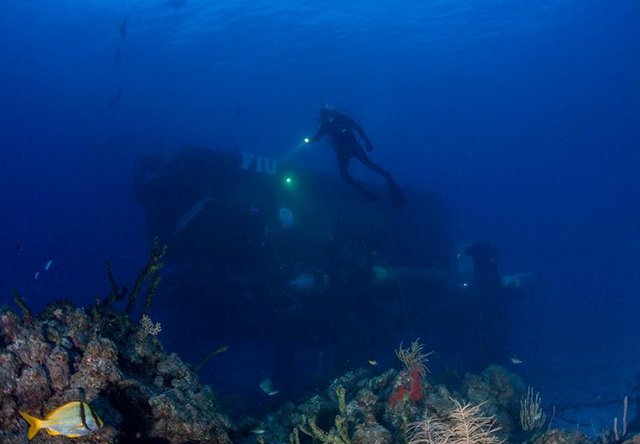
I'd love to tell you the future of Aquarius is bright. But funding for manned undersea activities only continues to dwindle. As robots become cheaper and more capable I expect we'll only see a stronger and stronger push to carry out all underwater tasks with robots.
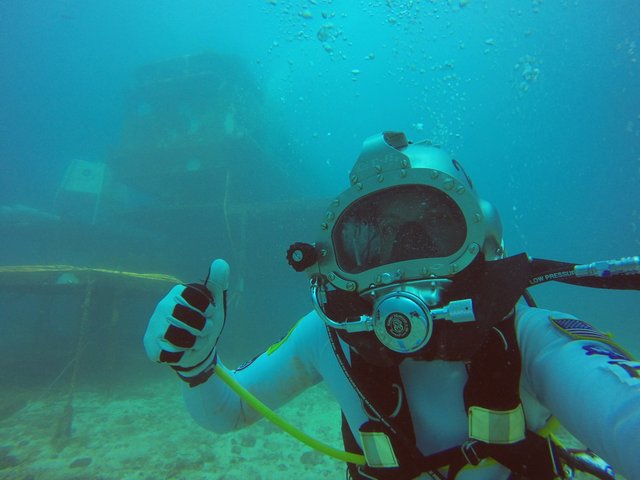
The only way there can be a future for underwater labs like Aquarius is if the general public becomes as aware of and excited for manned undersea missions as they do for manned spaceflight.
We have to be emphatic that we don't want to see robots sent to explore the ocean, we want humans to go. To add human interest, the excitement and danger of real people on the forefront of exploration who can then come back to tell us their stories.
Dang! What an excellent article! As you have pointed out, me nor my "uncles" knew anything about this! Thanks for sharing!
This is so frikken COOL!
I've always been fascinated by the ocean and all that it holds. I wonder what it would be like to live down there for a while. When I was (much) younger, I actually had ideas of studying a field that would take me to Antarctica research stations. I don't know what it is about testing one's extremes that prompt adventurous spirits. Thank you for sharing these photos! I really had no idea it existed and my imagination and wonder are through the roof right now :)
Oh me too, I think my fascination with such facilities is just an outgrowth of when I was 12 and obsessed with cool forts. What cooler fort is there than an underwater lab, space station, or Antarctic research base?
I practically lived in my treehouse when I was a kid...and under the table in the winter. I don't know that I'd strap into a vehicle with like a million gallons of fuel to jet into space, but I would certainly go under water or brave the cold... perhaps in another life :)
Dang I definitely wouldn't be able to be down there for no more than 2 days. Man I love fish but wouldn't want to live with them haha. Great Post @alexbeyman you got my upvote!
Thanks.
We can learn a lot from studying marine biology and marine ecosystems.
For example, about how diversity enhances productivity:
https://steemit.com/science/@lanimal/complementarity-and-comparative-advantage
Funding science is hard those days, especially if most of the deliverables consist of knowledge and not of practical applications or patents. It is great that the aquarius project is now supported by Florida International University and has not died.
Beautiful pictures by the way!
They must get awfully tired of seafood down there ... :)
They mostly eat dehydrated camping meals actually, like Mountain House or Backpacker's Pantry. They can't use an oven in that enclosed space due to the fumes. It's microwave only, or anything you can cook+hydrate by adding hot water to.
That's interesting. I suppose with the extreme pressure, they would be very limited as to what they could eat. Some of the dehydrated stuff in the MRE's in the service warned against eating in flight. I guess the opposite would be true down there.
Yeah, carbonated drinks don't fizz when opened either because the outside air pressure is the same or greater than the pressure which keep the CO2 saturated into the beverage. Supposedly it also diminishes the flavor of spicy foods.
Wow, this is really amazing, I love diving too and really great pictures!
Great article. I hope with the new robots we can use them to build more underwater buildings cheaper and stronger.